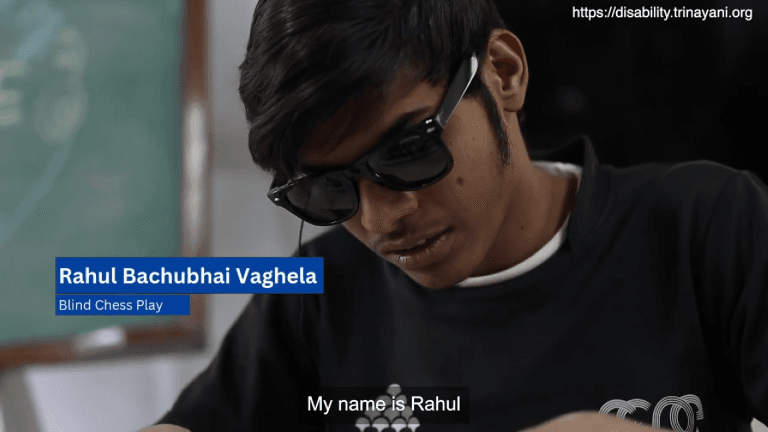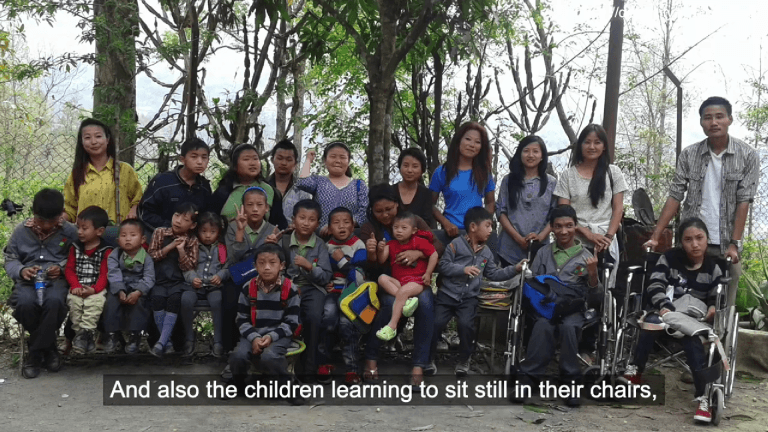Educating Deaf Children through Indian Sign Language
This film highlights the importance of using Indian Sign Language (ISL) in the education of deaf children. Ruma Roka from Noida Deaf Society talks about how bilingual education, using ISL as a foundation, helps deaf students learn in a language they understand. We then hear Saloni Kumari, from Asha Deep Divyang Purnavas Kendra, who shares how her school uses ISL along with other teaching methods like lip reading to help students.
Together, these voices raise awareness about the vital role that ISL plays in ensuring that deaf children have the opportunities to learn and grow.
Every child deserves to have real access to education in the language that the child is comfortable with and understands.
It’s a very simple philosophy, so we, uh we’ve just gone back to using Sign Language.
It’s non-intrusive, it does not traumatize the child.
For the child to understand –
Ma Pa Ba – phonetics is so difficult.
You…often you spend years trying to make the child understand just the sounds of certain alphabets and words.
We’ve taken it all around and said ‘okay there’s a language’, India is full of over two hundred twenty two proper languages and so many other dialects.
Why can’t there be another language which is can…which is being used, which is being used effectively by so many lakhs of deaf people.
So we use Indian Sign Language.
So the philosophy is, it’s called Bilingual education.
We give language foundation to our children, very much like us.
When I was in school, when I was three and a half years old, I knew Hindi and English.
I had language.
I could understand my teacher.
So for our children, we’re giving them Sign Language, how do we do that?
We use deaf trainers.
It’s very important that deaf children have role models to look up to.
I mean they do look up to us, they think, you know, you’re lucky, you can hear, you’ve got, you know, you’ve got all access to every kind of learning knowledge and learning.
They must be with a deaf adult.
And the deaf adult also understands because he or she has possibly gone through years of schooling, whatever it may be and is able to understand the finer nuances.
So, language first, through a deaf trainer, Indian Sign Language, visual classroom, everything that you can think of is visual inputted.
Inputted to these children because they are visual learners so that’s it, that’s the philosophy and it works beautifully.
*
The students in our school, Asha Deep Divyang Purnavas Kendra, are all deaf.
Our school is for deaf students and they study here.
Initially, we had classes till the 8th Standard.
But after the pandemic we increased in strength and started classes till the 10th Standard.
Apart from studies, we use different techniques.
We also try our best to communicate with the students, well.
Many of our teachers know sign language,
And some teachers also are trying to connect with the students and educate them.
Generally, we use sign language to teach the students.
For the younger children, we have TLM (Teaching Learning Methods) cards to show them.
We also use flash cards, activity methods and other techniques to teach all of them.
The students here, alongside studies, also attend and participate in cultural programs, sports and games at the National level too.
When we teach the students, we also use Signed English, as well as lip reading because our teachers also speak while teaching to enhance the students’ understanding of the lessons.
Although our students do not speak verbally, they continue their studies using sign language.
Dive Deeper: More on Disability
Learn about the most common inquiries surrounding disability, education, legislation, accessibility, employment and other sectors related to disability.


Playlist
Access & Inclusion


Playlist
Adaptive Sports


Playlist
Alternative Communication Methods


Playlist
Autism & Neurodiversity


Playlist
Blindness & Adaptations


Playlist






